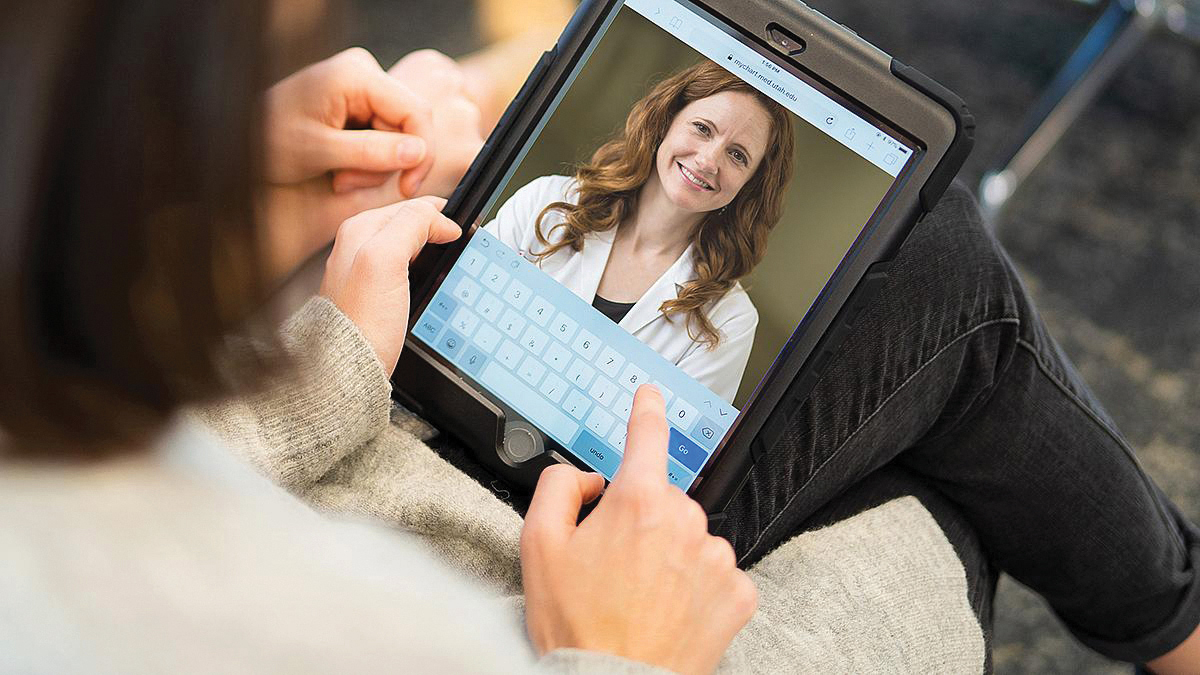Over the last few years, telehealth has become an important tool to streamline surgical care, increase provider capacity, and open new doors for patient access.
Prior to the COVID-19 pandemic, University of Utah Health boasted 12 specialties with active telehealth programs. U of U Health had 10,000 virtual patient visits in 2019—blazing the trail for neighboring and similar health systems. In response to the pandemic, many of our clinical teams quickly integrated the use of virtual care as a mechanism for caring for patients.
The result was a staggering 450,000 virtual patient visits in 2020 alone. This experience proves that, in most cases, virtual care makes a lot of sense for patients and providers.

As a clinician, I have always been fascinated with how technology can improve the experience for patients, providers, and care teams. Over the past decade, I’ve had the opportunity to help U of U Health grow its telehealth programs, enhancing patient access throughout the Mountain West with the use of technology.
Now, my focus is on applying the lessons we have learned over the past 20 years to build a future-ready health system.
U of U Health has a longstanding tradition of innovation. Compared to other health care institutions across the nation, telehealth had an early beginning here in Utah. We launched our first two telehealth programs, TeleStroke and TeleBurn, in 2004.
These initial programs were created by innovative doctors and care teams working to overcome patient barriers to high-quality care. While these programs were successful, telehealth was a niche strategy, promoted only in select specialties. However, since the onset of the COVID-19 pandemic, telehealth has become an important tool for both patients and providers.
In surgery and procedural areas, virtual care can streamline pre- and post-surgical connections. For primary and specialty care, virtual care has created greater capacity, allowing us to care for more patients than we could at physical facilities. For urgent services, virtual care plays a vital role in opening new doors of access to our exceptional providers and care teams.
As U of U Health continues to advance an aligned digital health strategy, the newly created Virtual Care team will draw from the success of the Office of Network Development and Telehealth (ONDT). Since ONDT launched in 2013, it has extended the exceptional care of U of U Health providers to our partners in the region through clinical outreach and engagement. ONDT will continue to focus on strategic partnership and outreach telehealth efforts, while the Virtual Care team will focus on U of U Health-designed patient journeys.
The mission of the Virtual Care team is to optimize our current virtual care practices, making our workflow and technology as efficient and effective as possible for our patients and providers. Another important part of our mission is innovation. What if we enhance the virtual visit to make it a preferred experience? We can do so much with technology today—imagine the future possibilities with more advanced technologies.
Our strategy for the next three years is to harness the power of technology to overcome one of our biggest barriers: patient access.
As the only academic medical center in the Mountain West, U of U Health serves urban, rural, and frontier communities throughout the region. Although our clinical footprint covers roughly 10% of the total area of the continental United States, we see patients within a much larger geographical area.
While virtual care isn’t a silver bullet, it presents an important set of solutions and tools. If we consider virtual care in all access points—clinics, hospitals, surgery centers—we can better guide patients to the most appropriate location for our services. We want to find situations where adding a provider-driven technology access point can help a patient avoid needing to be seen in the clinic.
If a clinic appointment is required, we can make sure the patient knows what imaging or labs to complete ahead of time so that everyone is more prepared for the appointment. It’s all about strategically bridging the gap of access to connect patients with our experts in more effective, efficient ways.